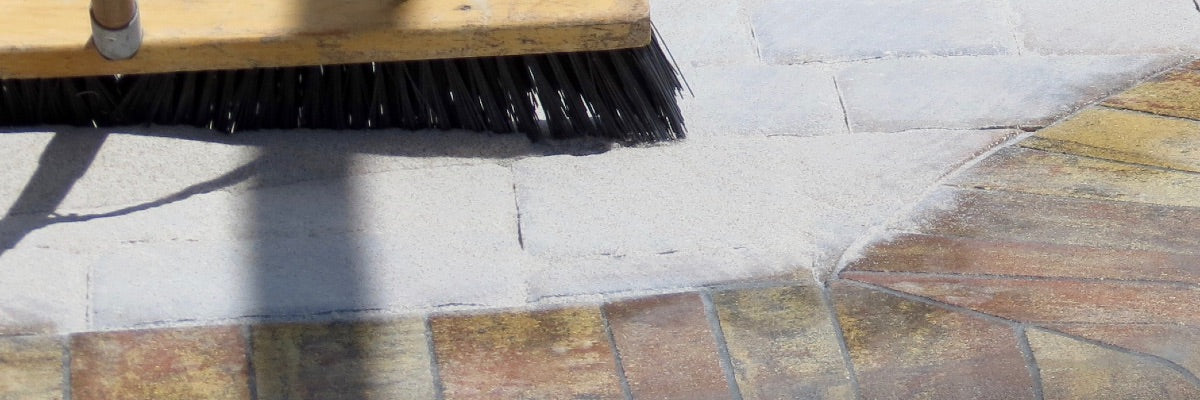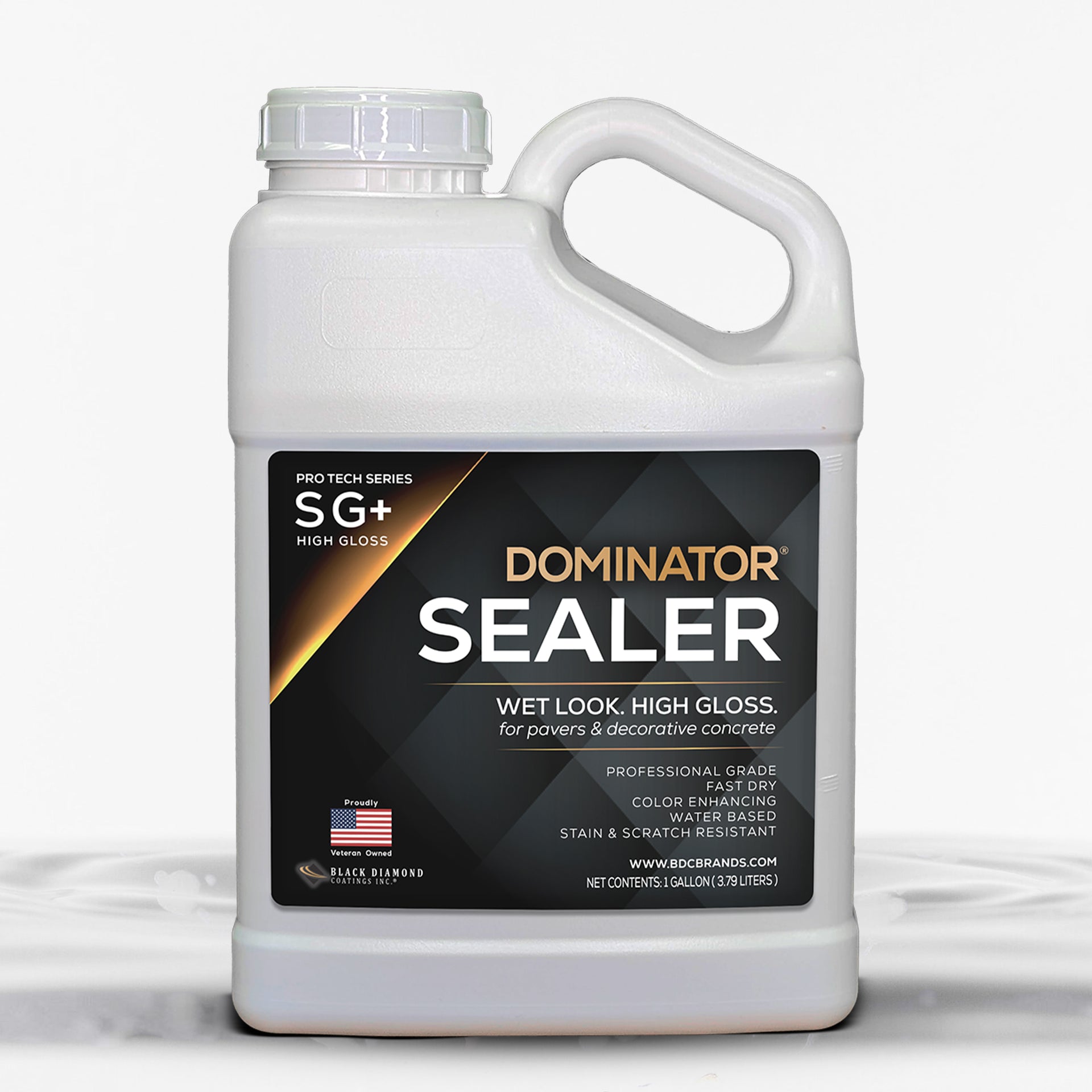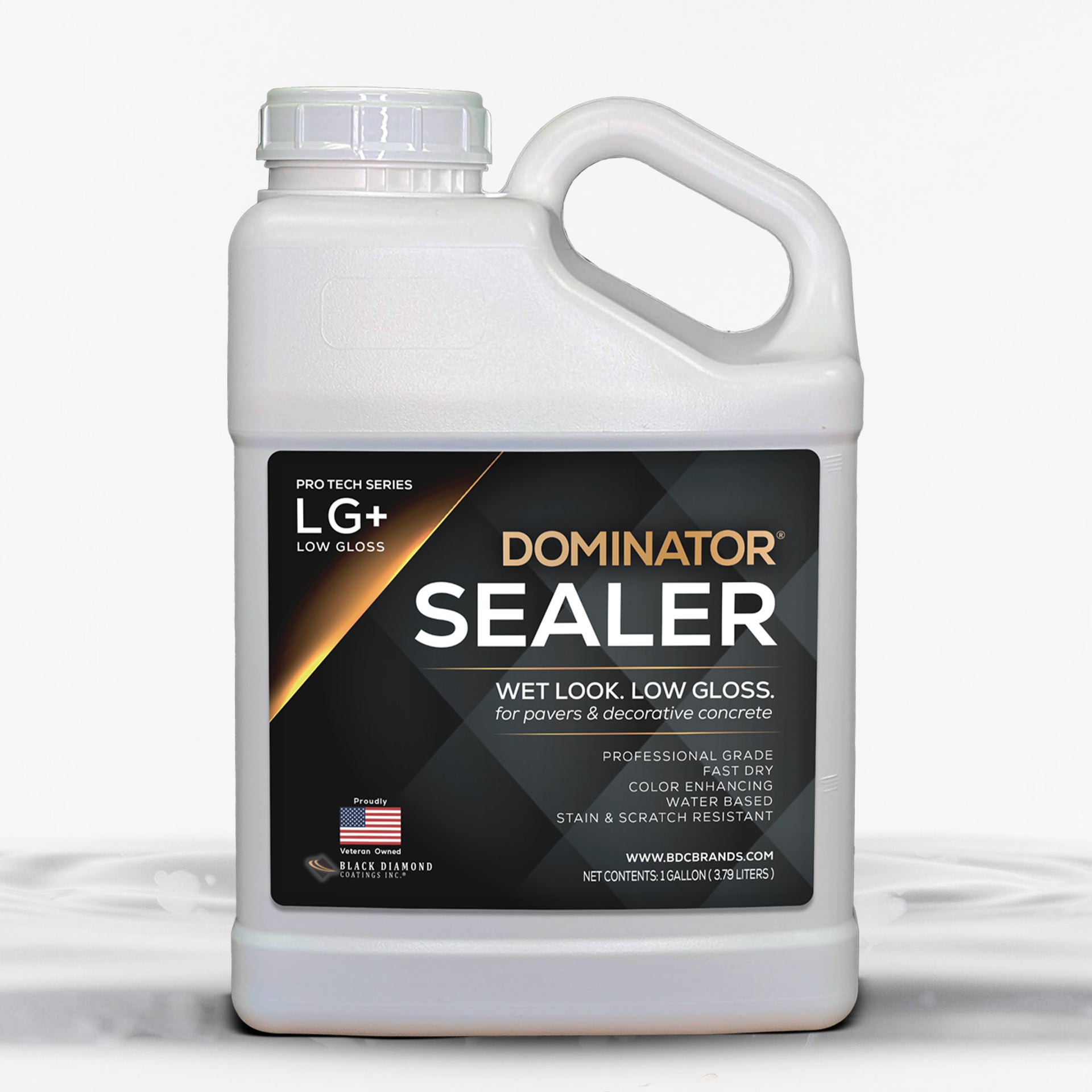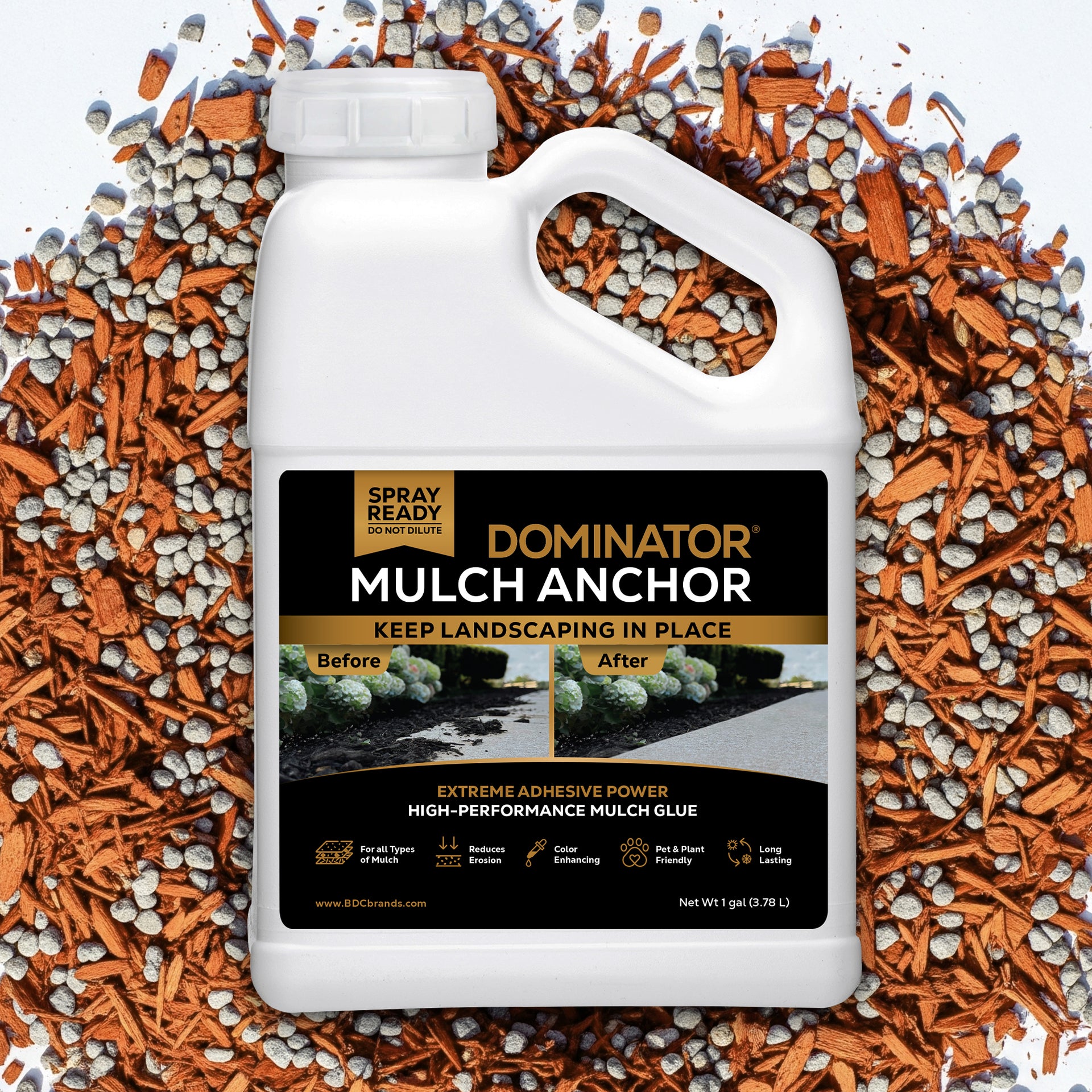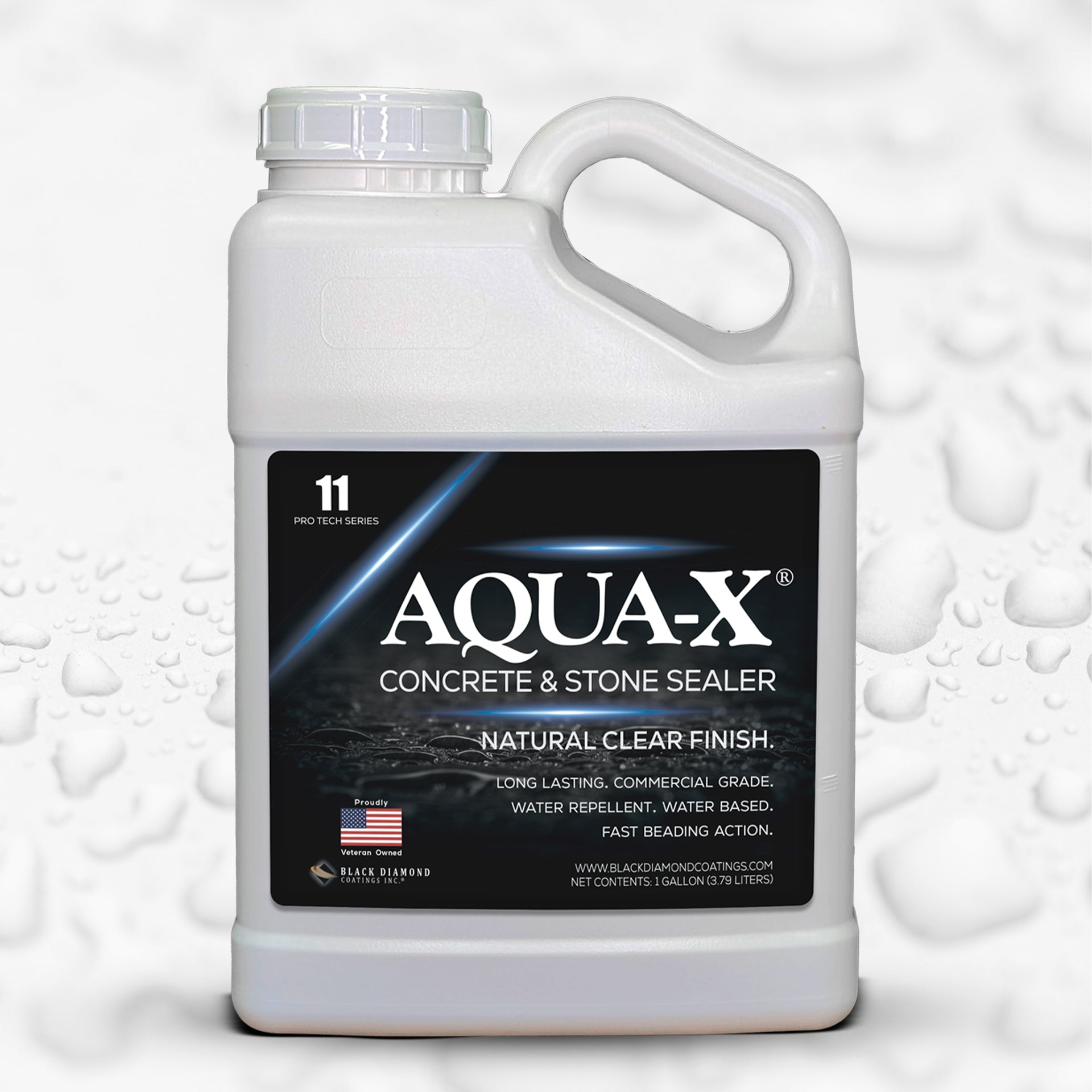Polymeric Sand (sometimes incorrectly referred to as "polymetric sand" and "polynumeric sand"), or Poly Sand for short, is a joint sand compound that is infused with a blend of water-activated polymers that significantly increase the effectiveness of the joint sanding material.
Contents of this Article
- What is Polymeric Sand Made of?
- How do I know which sand to choose?
- Polymeric Sand versus Regular Masonry Sand
- Can I use Grout instead of Polymeric Sand?
- Can all paver installations benefit from the installation of polymeric sand?
- Is Polymeric Sand Necessary?
- What Polymeric Sand Colors are Available?
- How Durable Is Polymeric Sand in Cold Weather?
- Where to Buy Polymeric Sand?
What is polymeric sand made of?
Polymeric sand for pavers and stone consists of various grades of masonry silica sand and a blend of polymers. Some polymeric sand includes cement that can leave a white/grey haze on your hardscape surface if not used properly. Polymeric sands that contain cement offer no flex and will often fail under normal traffic conditions.
How do I know which polymeric sand to choose?
Great question. There are many options available in big box stores, specialty retailers, and online. There are a few key considerations when choosing a polymeric sand for your project.
The first question you should answer is, “what performance level do I need?” This will help you determine the type of sand that will meet your needs. If it is a lightly used area that doesn’t get much traffic, a lesser grade sand may be just what you are looking for. These are typically less expensive options (often containing cement) and may only come in one or two colors. If you have a high traffic area and the performance and color of the sand are very important, you want to look for a high-quality polymeric sand. These types of sand are often more expensive and will come in a variety of colors to make sure you get a great color for your project.
Some key features to look for in a high-quality sand are:
- Initial set times, or how quickly it hardens
- Does it offer any flex technology?
- One of the most critical components is the hardness of the product once it is fully cured
Polymeric sand versus regular sand
Generally, when your pavers were first installed, a masonry or paver sand was used to fill the joints between the pavers. This works in the short-term to stabilize the pavers and prevent them from shifting or moving. Often, this benefit will be short-lived as regular paver sand will wash away during the first heavy rain of the season. It’s easy enough to repair though - just a trip to your local big box store for a few bags of inexpensive paver sand and a few hours of work on your day off to solve the problem. Over time, you'll need to continue replacing the washed-away sand.
Additionally, paver sand tends to hold a great deal of moisture in which mold and mildew love to grow. Nothing's worse than when you are trying to enjoy your space and the joint sand has turned green or black from growth. Proper maintenance of your pavers will include a good pressure washing to remove all the mold, mildew and any other contaminants that hinder the beauty of the pavers. When pavers are cleaned, and particularly when they are pressure washed, the paver joints will lose some of the regular paver sand. This makes the paver joints an unsightly focal point.
The question is, “How do I resolve these issues?”
The answer is Polymeric Sand, if you don’t want to be regularly refilling your paver joints with masonry sand. If you are not familiar with polymeric sand, you are missing a vital time and money-saving tool to reduce the maintenance on your beautiful pavers.
Once the polymeric sand is properly installed and activated with water, the polymer blend infused into the sand begins to harden. In most cases, the polymeric sand is completely set in twenty-four to forty-eight hours after activation. Once the polymeric sand is set, it will not wash out from the joints like the regular masonry sand. It forms a strong bond to the surrounding pavers to create a joint that will last for many years. Imagine not spending your Saturday with trips to your local hardware store for several bags of sand after each summer rain.
Can I use Grout instead of Polymeric Sand?
Polymeric sand is vastly different from grout. Grout is a cement-based product that offers zero flexibility when installed in a paver joint.
“Why do I need flexibility?”
Pavers are typically set on a base of various materials which range from crushed stone, sand, and crushed concrete. When properly installed, the pavers have flexibility which allows them to move slightly under foot and vehicle traffic. Without any flexibility in the joint, the bond will break, allowing the pavers the freedom to move. This also allows water to enter the joint, which can disrupt the paver base on which the pavers are set, and in freeze/thaw conditions can damage the pavers.
Can all paver installations benefit from the installation of polymeric sand?
The short answer is no. Not all installations are right for polymeric sand. Typically, any paver joint that is less than 1/8” is not recommended for polymeric sand. These very narrow joints do not allow enough of the polymer blend into the joint to properly set. Also, joints greater than four inches are also not good candidates for installing polymeric sand. Pay attention to the application guidelines as not all products will allow you to install in joint widths up to 4 inches wide. The DOMINATOR® Polymeric Sand does allow installations from 1/8" to 4" wide.

In order to ensure the polymeric sand is set up for success on your project, proper drainage is a key factor. “What is proper drainage?” This simply means that when you activate the sand with your garden hose, the water needs to be able to drain away. Installations that do not let water drain away are probably not the best places to install polymeric sand. If you notice that after a heavy rain, you have prolonged areas of standing water on your pavers, it is recommended that these areas be addressed prior to the installation of a polymeric sand.

Is polymeric sand necessary?
It depends. For tight joints, (less that 1/8”) polymeric sand is not necessary. For wider gaps (typically 1/8”- 4”), polymeric sand provides additional joint stability and is helpful for surfaces that are regularly hosed off or pressure washed, like a pool deck or patio. For wider joints, polymeric sand really does become necessary for true joint stability. Once the pavers start to shift, the base material can become compromised and may cause the pavers to dip or shift which can reduce the integrity and the aesthetics of your paver areas. Polymeric sand can also help reduce the growth of weeds between your pavers and also help deter ants from burrowing into your sand joints.
What polymeric sand colors are available?
Another benefit of installing polymeric sand is the esthetic consideration. Polymeric sand manufacturers offer different colors of sand to greatly enhance the beauty of your paver installation by complementing or contrasting your unique paver colors. Consider the type of sand used and its impact on the finished sand esthetic as well. Some manufacturers offer sand that is a larger particle size, which gives the finished polymeric sand a more rugged appearance. Others offer sand with a smaller particle size, giving the finished polymeric sand a smoother appearance, more closely associated with grout (albeit not grout).
There are two gray colors available in the DOMINATOR® Polymeric Sand. Titanium is a beautiful weathered oyster gray, similar to a slate gray color. The Charcoal polymeric sand is a smoky gunmetal gray, giving it a rich contrast to many pavers. Taupe is a blended color, and Carmel is a mixture of warm wheat and coffee loaded with cream – both are very popular colors for some of the red and brown brick paver variations. The Natural DOMINATOR® Polymeric Sand is truly the color of natural Florida sand, which is a light ivory, but not white.
It’s always a good idea to get a sample of polymeric sand to make sure it will work for your application and to test the color with your own pavers or stone. Just like paint, it’s difficult to determine color from your computer screen. Also keep in mind that polymeric sand is formed with a natural sand material that is prone to slight color variations, so it’s possible for sand to have a slight color difference from one batch of sand to another.





How durable Is polymeric sand in cold weather?
Freeze-thaw cycles are detrimental to many hard surfaces with traditional polymeric sand being no exception. Traditional polymeric sand that has cement as a component is prone to losing its bond during freeze-thaw cycles, which can allow water to enter the joint. When water enters the joint and expands due to freezing, the pavers may chip and/or crack. This can be expensive damage occurring to your paver areas. The use of regular masonry sand in the joints can also cause damage to your pavers during freeze/thaw conditions. Alternately, the use of a high-quality polymeric sand that doesn't contain cement can keep your paver joints dry and reduce the chance of any damage from the effects of freeze/thaw.
Where to buy polymeric sand?
You can buy polymeric sand in many locations. The DOMINATOR® Polymeric Sand can be shipped directly to your home or project, saving you time while providing a high-quality product. If you’re asking for the “DOMINATOR Polymeric Sand near me,” some of our retailer partners do have our sand in stock. Feel free to ask us for a retailer near you.
The big-box stores, like Home Depot and Lowe’s, carry other brands of polymeric sand. Specialty building products retailers also typically sell polymeric sand.
How do I install polymeric sand?
Although there are many similarities to polymeric sand installation, you must follow the instructions of the particular polymeric sand that you purchase. Most products require compacting the sand. But there are varying watering instructions during the activation phase.
Most sand installations require the pavers or stone to be completely dry to start. Similarly, most sand installations will recommend that you get the excess polymeric sand off of the top of the surface prior to watering the sand in the activation phase.
Below is our DOMINATOR® Polymeric Sand installation video for your reference.
